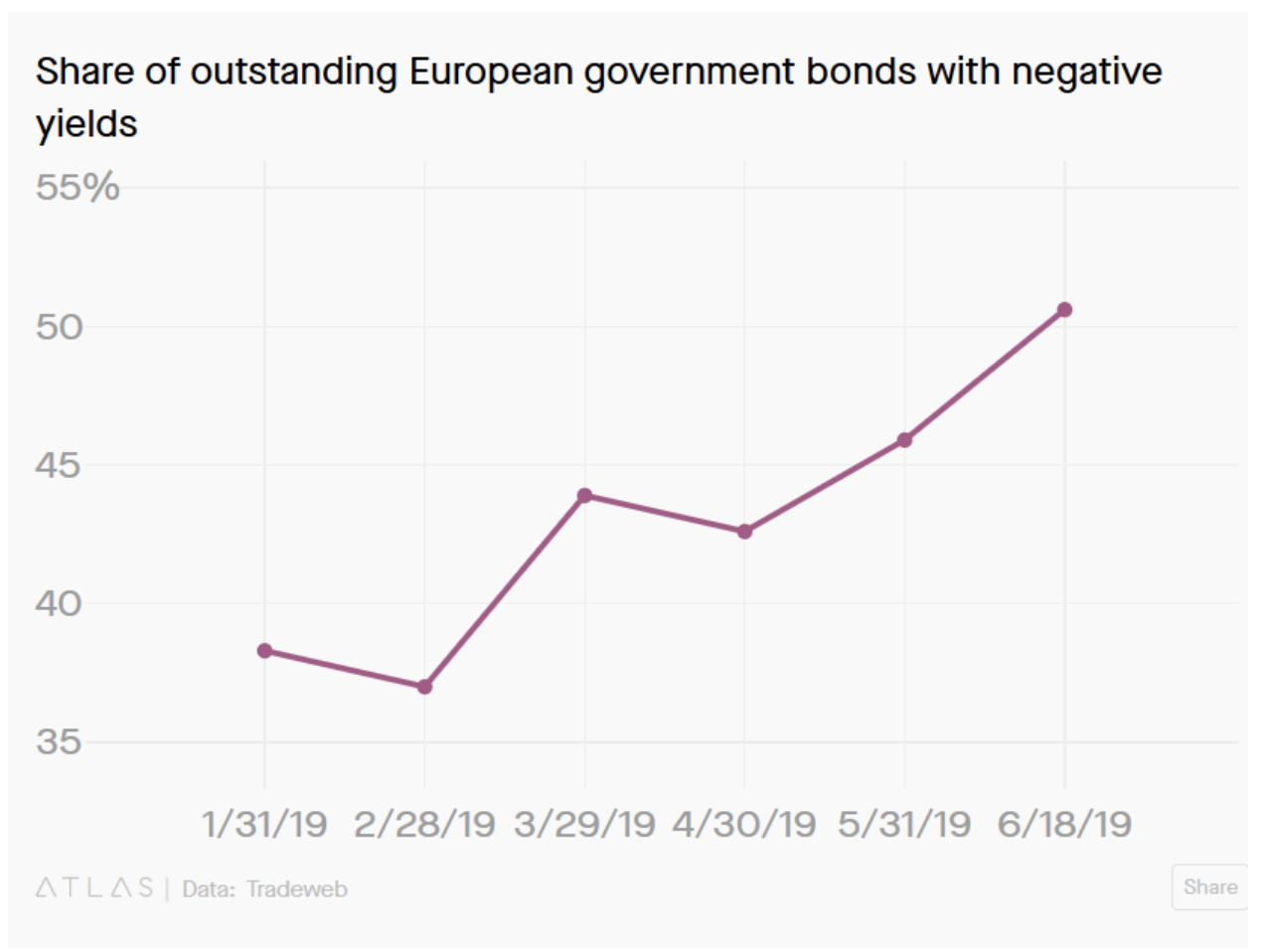The universe of government debt with yields below zero has continued to swell to alarming proportions, raising the specter of a market starved of safe assets wherein to park its money as financial markets increasingly looks fraught with danger. Negative-yield bonds here refers to both investment-grade corporate and government bonds that will, upon maturity, pay their holders less than what they originally paid for. Right now the volume of negative yield bonds has swollen to $12 trillion—the highest level in two years.
But what exactly has been spooking investors? There are a myriad of factors: a slowing global economy; persistently low inflation levels despite otherwise healthy economies and labor markets; the seemingly never-ending U.S.-China trade war and escalating geopolitical tensions between the world’s largest economy and the Middle East.
Against this backdrop, investors have been expecting a loosening of monetary policies, chiefly in the form of a drop in interest rates and maybe even another round of QE. Interestingly, stock markets, usually the first victims of negative market sentiment, have suddenly turned into another safe haven, with the MSCI World Index rallying an impressive 13.4 percent YTD as expectations for yet another round of stimulus has trumped worries of an overheated market.
The U.S equities benchmark, S&P 500 Index, has climbed 17.6 percent the year-to-date.

(Click to enlarge)
Source: MSCI
A desperate eurozone
A good chunk of those negative-yield bonds originates from the eurozone.
Today, €4.4 trillion ($5 trillion), of the region’s bonds are in negative territory. That’s actually half of all European government bonds and about a fifth of the region’s investment grade corporate debt. It represents a sharp 33 percent rise for this class of bonds from €3.3 trillion by the end of January.

(Click to enlarge)
Source: Quartz
Greater fool’s gold?
A famous Wall Street analyst once labeled Netflix a “greater fool's stock”, meaning that most investors were so enamored of the company’s growth story that they bought in the confidence that they could always sell it at a higher price to another hapless investor despite the company’s dim profit outlook.
Related: Beijing’s Plan To Disrupt Rare-Earth Exports
Well, maybe this describes the current bond market to a Tee?
After all, bonds bought at a negative nominal yield today will almost certainly lose some of their principal by maturity making them appear like a losing proposition. Regardless, people are still buying negative-yield bonds in countries like Germany and Japan.
But that’s simply the case because the majority are traders and not investors. Strange as it might sound, there really is a method to this madness.
It’s actually possible to make money in the short-term on negative yield bonds. Forex traders probably understand this game better than most since the implied forward exchange rate for a currency pair is determined by the spot exchange rate. The same principle applies to bonds. There’s a case to be made for buying these seemingly worthless bonds by taking advantage of the foreign exchange effect.
Here’s a crash course.
Traditional safe havens are back
But maybe you don’t need to understand the intricate workings of the FX market to thrive in this rather hostile environment. This crazy market has even the famous bond king jumping ship. None other than bond trader Jeff Gundlach himself has endorsed gold, just falling short of calling it the big long.
Gundlach’s reasons appear credible enough: increasing risk of recession in the U.S. leading to a weaker greenback. He reckons there’s a 40-45 percent chance of a recession over the next six months and a 65 percent chance over the next 12 months.
Gold has been rallying hard over the past few days after the ECB and the Fed held interest rates steady and even hinted at rate cuts in the not-so-distant future.
Gundlach though is a gold bug, and has admitted to owning the metal since back in the day when it was priced at just $300 an ounce. Maybe bond traders will be better served taking this two-pronged approach.
By Alex Kimani for SafeHaven.com
More Top Reads From Safehaven.com:

















